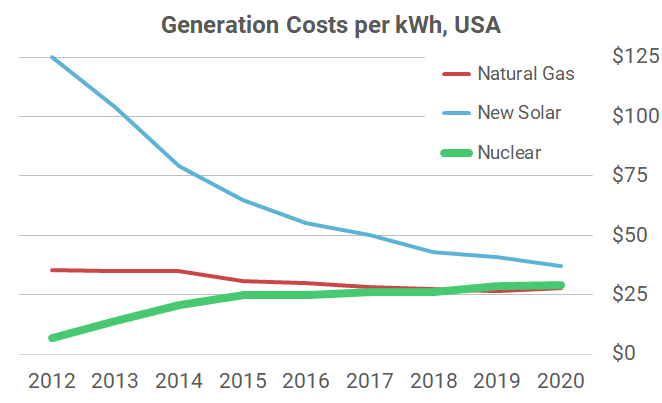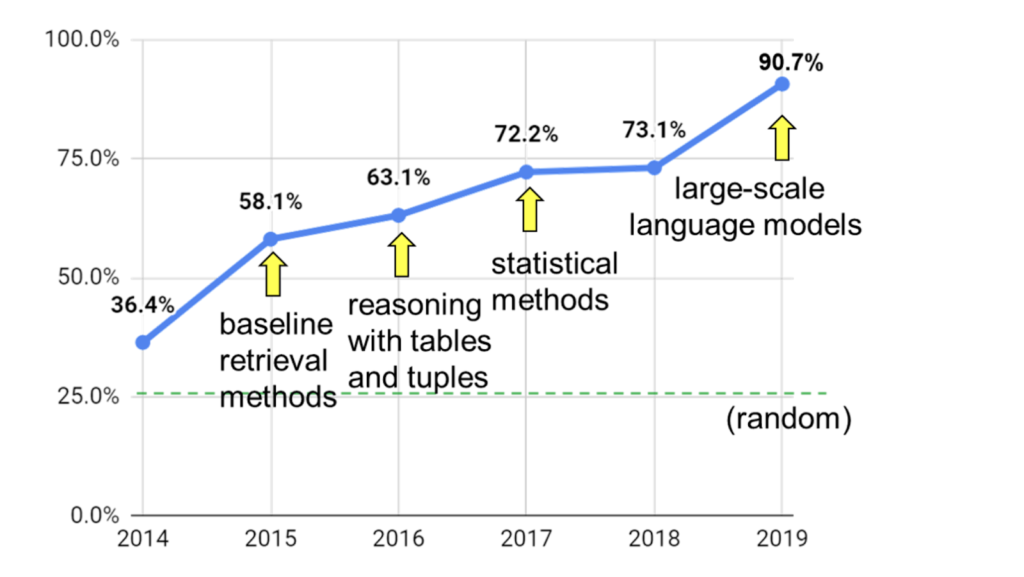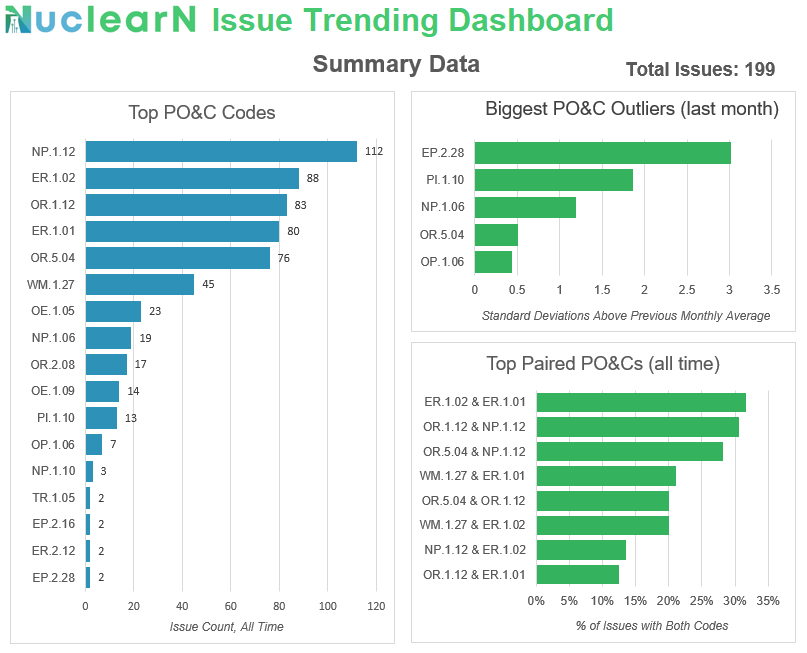Over the last few years there has been a lot of discussion in the domestic Nuclear industry about using Artificial Intelligence to automate Nuclear Corrective Action Program (CAP) coding. The general idea is that sites can apply Artificial Intelligence algorithms to process large amounts of historical CAP data, those algorithms learn how Condition Reports and trend codes relate, new data is fed through those algorithms, and codes are automatically applied. While this is an exciting development in an industry with a long history of manual administrative processes, only a few sites have actually been able to adopt automated coding. To learn how sites can better adopt AI to automate Nuclear CAP coding, we will cover the economic pressures facing Nuclear Power, discuss the important role of coding in CAP, and present new tools for enabling AI-driven automation of Condition Report coding.
Cost Savings in Nuclear CAP
There is a simple, unavoidable fact looming over the Nuclear Power industry in the United States. The cost per kilowatt-hour of Nuclear power has been increasing year over year for a decade, while existing Natural Gas and new Solar Generation costs are decreasing. Simply put, Nuclear Power Plants need to become cheaper to operate in the very near future if they want to remain economically viable.

This isn’t a secret to anyone who has worked in Nuclear Power over the last few years. In fact, the entire industry mobilized to combat rising costs in a combined effort under the “Delivering the Nuclear Promise” initiative. While this initiative helped slow down cost increases in the industry, it has still not been enough. Costs for competing generation sources are closing in, and sites have to do more if they want to remain relevant.
One opportunity for savings comes from the “Corrective Action Program” (CAP) each site has. Nuclear Corrective Action Programs are a key part of ensuring the safe continuing operation of a plant, are required by law, and are tremendously expensive to run and administer. There are plenty of opportunities for cost savings in CAP, but in this article we will address one: using Artificial Intelligence to automate the trend coding of Condition Reports.
But before we can get into the solution, let’s first cover the economics & challenges of today’s prevalent manual approach to Condition Report coding.
Trending Isn’t Easy…
The average Nuclear reactor will log between five and ten thousand Condition Reports in their CAP program each year. It is not uncommon for multi-unit sites or fleets to have hundreds of thousands, even millions, of Condition Reports in in their historical datasets.
The Nuclear Regulatory Commission (NRC) & the Institute of Nuclear Power Operations (INPO) expect healthy CAP programs to include the analysis and trending of aggregate data. This is a daunting task for many plants, exacerbated by an inherent attribute of CAP data. Data collected in a Condition Report usually only includes the following information:
- Title
- Description of the issue
- Affected equipment/procedures
- Actions taken
3 of the 4 key data elements of a Condition Report are text. Nuclear-specific, convoluted, jargon-heavy text. And anyone that has done data analysis on text-heavy data sets can tell you that aggregate analysis and trending of text data is almost impossible using traditional analytical techniques.
“During performance of IST AF43-9PT4F, AFP A tripped on an overspeed signal. This resulted in an unplanned entry into LCO 1.54, and mandatory entry into Mode 2 within 2 hours. SRO cleared the alarm, and AFP A was declared OPERATIONAL after performing re-test.”
Share a few thousand of these with an analyst from a different industry and see how well they can trend (they won’t get very far)
Domestic Nuclear sites have recognized this challenge, and combat it by having professionals with extensive Nuclear experience bucket their Condition Reports by tagging them with one or more “codes”. By tagging Condition Reports with one or more of these codes, plants find it much easier to trend and analyze their issues, understand which performance areas they may be doing poorly in, and benchmark themselves against the rest of the industry. Many sites have developed their own coding schemes, but recently many sites have begun tagging their issues with one or more of the INPO Performance Objectives & Criteria (PO&C). The INPO PO&Cs are site-agnositc list of nearly 1,000 performance criteria that plants must meet to be considered high-performing.
Trending Isn’t Cheap…
While this process of “coding” issues is an important part of a healthy CAP program, it comes with a significant cost and several drawbacks. The “coding” process is very time consuming and requires someone with an extensive background in many different areas of Nuclear Power, as well as an intricate knowledge of their coding scheme. Our experience with “coding” processes is that they take three to five minutes per Condition Report. When we combine this with the typical inflow of issues at a domestic Nuclear reactor, and consider a reasonable loaded hourly rate for a nuclear professional…

… we reach the staggering number of $40,000 per year per reactor spent just coding Condition Reports. If we take into account that this role will typically require at least one dedicated individual at a multi-unit site, and that that individual will need to spend a significant amount of time in training, PTO, and activities required of a nuclear professional, we can reach an even higher number.
In addition to costs, there are other challenges with manual coding practices. There are significant differences in the “styles” used by different individuals when coding, which can result in unpredictable labeling practices. When the people performing the coding change, or when additional individuals help with coding during an outage, it is common to see drastic changes in how issues are coded and what codes are used. This can result in “trends” and “spikes” in the data that have nothing to do with underlying plant issues, but are instead the byproduct of a manual coding process. Additionally, it is not uncommon for coding schemes to change. The INPO PO&C codes for example have received several revisions over the years. When faced with a revision, plants are faced with either losing their historical data, paying tens of thousands of dollars to “re-code” historical data, or use inexact “translating” processes to transform their historical data into the new schemes. None of these options are particularly appealing.
Artificial Intelligence Can Help
What if plants could get the majority of the benefit of coding, eliminate some of the drawbacks, and save costs while doing so? Recent advances in Artificial Intelligence techniques for text and “natural language processing” can allow them to do just that. Using a subset of AI called “Machine Learning”, it is now possible for a computer algorithm to process historical CAP data to learn the correlations between Condition Reports and the codes that have been assigned to them. After training is complete, new Condition Reports can be fed through the model and codes can be applied automatically using the learned historical patterns.

This approach has numerous advantages over manual coding. A machine learning algorithm will always code the same Condition Report the same way, removing the inherent variability in manual coding. Additionally, a machine learning algorithm can code 24×7, allowing sites to do real-time trending around the clock (or just not have to wait until a “coder” is back in the office from PTO). When new coding schemes come out, sitescan train a model on a relatively small number of new examples and apply it to historical data – allowing them to retain historical trends by re-coding data efficiently.
So why haven’t plants adopted AI-drive automated coding en masse? Well, Machine Learning isn’t easy, and it especially isn’t easy to do on text-heavy datasets with complex domain-specific vocabularies (looking at you Nuclear). Sites that have looked to traditional Nuclear software vendors have found that they lack the technical capabilities to build and train Machine Learning models to a reasonable accuracy level. Others that have looked to larger tech firms have found price tags well into the hundreds of thousands of dollars, with no guarantee that the provided solutions will actually work.
To have any chance of adopting AI-driven automation of Condition Reports, sites need an affordable solution built by people that know State of the Art Artificial Intelligence techniques and know Nuclear.
Nuclearn.ai to the Rescue
We at Nuclearn have built just that: an affordable Machine Learning algorithm that applies PO&C codes to Condition Reports. As part of our free “Cloud Basic” subscription, anyone can start automatically coding their Condition Reports. The process to get started is exceedingly simple – register an account and download the “Condition Report Trending Dashboard” excel sheet from the CAP AI module, and follow the instructions to input your Condition Report texts! The pre-built excel sheet will send Condition Reports through our PO&C algorithm, predict the PO&C codes, and automatically trend them in just a few minutes.
*Note: As of v1.4, the CAP Report Trending Dashboard is deprecated in favor of our new analytics module. Learn more by watching this video: https://youtu.be/rxsq5CF72ss
Now what about cost? As discussed earlier, any AI-driven solution needs to be competitive with the $40k a year per unit price tag for manual coding. Nuclearn’s free Cloud Basic subscription offers 1,000 predictions free per month at no cost. For most Nuclear sites in the U.S., that means that adopting Artificial Intelligence based coding can be done for free, right now.

Some sites may find that Nuclearn’s PO&C algorithm performs well, but that they either have unique Condition Reports unlike the rest of the industry, or desire a different coding scheme from the standard PO&Cs. In that case, sites can contact us directly, and we can discuss our on-premise platform that can train directly on your data and meet your needs. And we can guarantee for PO&C coding, Nuclearn’s solution will be substantially cheaper than $40k per reactor per year.
Nuclearn is here to help Nuclear Power Plants adopt AI-driven automation of Condition Report coding, and save money in the process. Sites need to automate key processes, such as Condition Report trending, if they want to remain economically viable. Read Introducing Nuclearn to learn about why we started Nuclearn, and visit https://nuclearn.ai to learn about other processes that Nuclearn can help automate.
